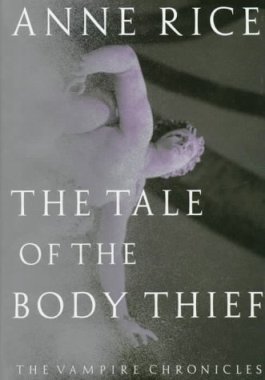| (see introduction) THEMES STUDIED The War of Kurukshetra marked (literally) the end of the previous era and the beginning of the current one (see Context: Chronology & Geography). As can be expected from an age-old epic like the Mahabharata, there is a huge body of debates and analyses found both in the scholarly and non-academic realms. Without going into much of that, here are two themes that I think dominate Mahabharata discussions, at least when it comes to people who love controversy: Mythification: Krishna Oral transmission causes history to become legend, and legend to become myth. When speaking academically, "myth" does not refer to something false, but rather a distorted and exaggerated version of the truth. More importantly, this truth is believed to be true by the general public in which it is told and appreciated. However, it is not always oral transmission that causes mythification (loosely defined in mythology as the process in which heroes and villains of a legend become supernatural beings like gods and demons). Sometimes a scholar sees that a myth may have been tempered on purpose, and can usually guess the stimulant to be a religious movement. Something similar seems to happen with the Mahabharata: the Bhagvad Gita and the Harivamsa Parva in the epic are both possibly appended to the text, given differences in structure and style. Both of these also explicitly reveal Krishna as an avatar of Lord Vishnu. It is very possible that a Vaishnavite movement took place, in which classical (Vedic) Hinduism became more strictly a religion rather than the philosophy that it was, and a focus on Vishnu as a Godhead began to appear in sacred texts. What makes this more interesting is that when Krishna's magical poweress, or at times even Krishna himself, is taken out of the picture, the resulting scene becomes a prime candidate for censoring. For example, when Dushasana drags Draupadi into the court and starts to pull off her clothing, Draupadi prays to Krishna who responds by making the cloth of her sari never-ending. Suppose Krishna had not intervened, we would have an even more unjustified and socially unacceptable situation than before. Some scholars argue that the Krishna in Mahabharata, is not Krishna the Vishnu-avatar at all, but is made to appear so by "editing". But these debates go on, as there is not much evidence to argue with on either Side. Polyandry & Polygamy: Draupadi & Kunti Another amazing theme persistent in the epic is sexuality, especially such that would be considered taboo in society: a woman's sexuality. There is usually an apparent contradiction in the author's view or somewhat of a justification presented when it comes to occurrances of a taboo. For example, while Draupadi is married to five men and this does not seem extraordinary in the story, when it comes to the court scene Karna defines a prostitute so that it would encompass Draupadi and justifies that she be treated like one. In another instance, while Kunti has a boon to conceive from gods and it is again not frowned upon (being a boon, and gods), she is hesitant when Pandu asks her to do this and defines again what a woman like that is called. Kunti also gives up her firstborn for this particular reason. Not a very strong woman, she. The boons in Kunti's case, like Karna's comments in Draupadi's case, seem like cover-ups and cause some rage in relevant debates. |
EXCERPTS FROM MY ESSAYS Shankhaa - The Feminine Conch, On Symbolism: This essay talks about the repressed femininity of the warriors in the Mahabharata (Krishna and the Pandavas in particular) expressed via symbolism of the conch. Here is an excerpt: "All these parallels are just more metaphors concerning the conch shell. To decipher the symbolism, one must combine the two lines of thought. One is that the personality of the conch shell is indicative of its owner's character, and the other is that the conch shell is uniformly feminine. It is not too farfetched then to understand the conch shell to symbolize the warrior's repressed femininity. A warrior is placed at the extreme male end when it comes to the gender spectrum, especially the time and culture in which Sage Vyasa and contributing authors were shaping the Mahabharata to bring it to its completion. An exception occurs in the Virata Parva that proves the rule. In this liminal case, the social stereotypes are broken to allow Arjuna, the ultimate warrior, to abandon his manhood and become a dance teacher of neuter sex (Mahabharata, 72). Furthermore, Arjuna's feminine role in these chapters seems to be accepted as the best disguise for him because in reality, a warrior could (and should) be nothing but masculine. This epic successfully brings to life the dichotomy of not just a warrior, but of any man." - Juhi Shukla, 2008. Power by Myth, On Power Structures: This essay talks about how myths dictate the power structures that we see in the society in which these myths proliferate. I especially talk about the structure of power, and the difference of power, between the men and women in Indian mythology. Here is the conclusion: "In the varnas we see how the Rigveda outlines laws of religious power while it neatly categorizes the society and assigns appropriations to each order. The exclusion of outlaws from the varnas implies a power structure imposed on even those who are not included in the system. At the same time, the idealization of Indra in vedic literature hints at what is expected of a political leader in early South Asian society, in contrast to whom the female characters of the Veda insinuate certain expectations for women in the same culture. A people that base their religion on the Vedic teachings are bound to follow these principles and shape their power structures like those depicted. It is difficult for the Veda then, to not dictate the powertoni in early South Asian society." - Juhi Shukla, 2007. From Best to Perfect: Sita's Journey from Valmiki to Us, On Gender Issues: This essay talks about the difference between how Sita, the heroine of the epic Ramayana, is portrayed originally by Valmiki and how she is depicted now in popular culture. This contrasts the way in which the women of the Mahabharata are still seen today. Perhaps the Mahabharata has not been as wounded by religious distortion as the Ramayana. Here is the conclusion: "Untruthfulness, rashness, guile, stupidity, avarice, unseemliness and cruelty are a woman's seven natural flaws. - Chanakya. |
Mom Has Stacked Dinner Party Roster
8 years ago


 Specifics: iPhone 3G 16Gb IOS 3.1.3 on Windows 7 (x64) using RedSn0w
Specifics: iPhone 3G 16Gb IOS 3.1.3 on Windows 7 (x64) using RedSn0w I have been quite happy with my iPhone3G, despise its limitations due to apple's restrictive OS. I've had friends who jailbroke their iPhone, but I never felt the need to. Until recently that is. When Apple decided to bring out the 3GS, the 3G processor might have suffered just a bit to keep up with the new OS, but when IOS 4.0 came, with the brand new 4G with all its bells and whistles, it was the end of 3G life as 3Gers knew it. Even though most of the
I have been quite happy with my iPhone3G, despise its limitations due to apple's restrictive OS. I've had friends who jailbroke their iPhone, but I never felt the need to. Until recently that is. When Apple decided to bring out the 3GS, the 3G processor might have suffered just a bit to keep up with the new OS, but when IOS 4.0 came, with the brand new 4G with all its bells and whistles, it was the end of 3G life as 3Gers knew it. Even though most of the 









